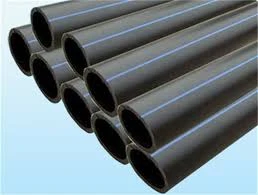Aug . 14, 2024 06:04 Back to list
Techniques for Efficiently Cutting HDPE Sheets for Various Applications in Manufacturing and Crafts
Cutting HDPE Sheets A Comprehensive Guide
High-Density Polyethylene (HDPE) sheets are widely used in various industries due to their durability, chemical resistance, and versatility. Whether you're a craftsman, builder, or DIY enthusiast, cutting HDPE sheets can be a straightforward process with the right tools and techniques. This article aims to guide you through the cutting process, ensuring clean edges and precise dimensions for your project.
Understanding HDPE
Before diving into the cutting process, it's crucial to understand what HDPE is. This thermoplastic polymer is known for its high strength-to-density ratio, making it ideal for applications ranging from construction materials to household products. HDPE is resistant to moisture, chemicals, and UV rays, which further enhances its suitability for outdoor applications. Whether you're using it for signs, containers, or protective barriers, knowing how to cut HDPE effectively is vital.
Tools Needed for Cutting HDPE Sheets
Having the right tools can significantly impact the quality of your cuts. Here are some essential tools you may need
1. Utility Knife For thinner sheets (typically up to 1/4 inch), a utility knife can be an effective tool. Ensure that the blade is sharp to achieve clean cuts.
2. Circular Saw A circular saw equipped with a fine-toothed blade is ideal for cutting thicker sheets. Using a carbide-tipped blade designed for plastics can minimize chipping and provide smoother edges.
3. Table Saw For precise cuts and larger sheets, a table saw is the best option. Ensure you have a fence and a miter gauge to maintain accuracy and control.
4. Router If you require decorative edges or intricate shapes, a router can be used with specialized bits for HDPE.
5. Jigsaw For curved or irregular cuts, a jigsaw fitted with a fine-toothed blade can offer the flexibility needed for detailed work.
Preparing for the Cut
cutting hdpe sheets

Preparation is key to achieving the best results when cutting HDPE sheets
1. Measure Twice, Cut Once Accurate measurements are crucial. Use a measuring tape and mark your cut lines with a pencil or marker. Straight edges and clear lines will help guide your cuts.
2. Secure the Material HDPE sheets can flex during cutting, which can lead to uneven edges or accidents. Secure the sheet using clamps or a non-slip mat to keep it stable.
3. Safety First Always wear appropriate safety gear, including goggles and gloves. Even though HDPE is generally safe to work with, it's better to be cautious.
Cutting Techniques
When it comes time to cut, here are some techniques to ensure a clean cut
1. For Straight Cuts Use a straight edge as a guide alongside your utility knife or circular saw. For thicker sheets, several passes with a utility knife may be required instead of trying to cut through in one go.
2. For Curved Cuts With a jigsaw, follow your marked lines carefully. For better control, you can start at a low speed and gradually increase once you feel comfortable.
3. Finishing Edges After cutting, you may notice rough edges. Sanding the edges lightly with fine-grit sandpaper can help achieve a smooth, polished finish.
Conclusion
Cutting HDPE sheets doesn't have to be a daunting task. With the right tools, preparation, and techniques, you can achieve excellent results for your projects. Whether you’re making a custom piece for home improvement or crafting intricate designs, mastering the art of cutting HDPE will expand your capabilities and creativity. So gear up and get started on your next HDPE project!
-
High-Quality PPR Pipes and Fittings Durable ERA PPR & PVC PPR Solutions
NewsJul.08,2025
-
Black HDPE Cutting Board - Durable, Non-Porous & Food Safe HDPE Plastic Cutting Board
NewsJul.08,2025
-
High-Quality CPVC Panel Durable HDPE & PVC Panels Supplier
NewsJul.08,2025
-
Double PE Welding Rod Supplier - High Strength, Durable & Versatile Welding Solutions
NewsJul.07,2025
-
High-Quality PVC-O Pipe Supplier Durable 75mm PVC Pipe & Connections Leading PVC Pipe Company
NewsJul.07,2025
-
HDPE Drainage Pipe Supplier – Durable & Corrosion-Resistant Solutions
NewsJul.06,2025

